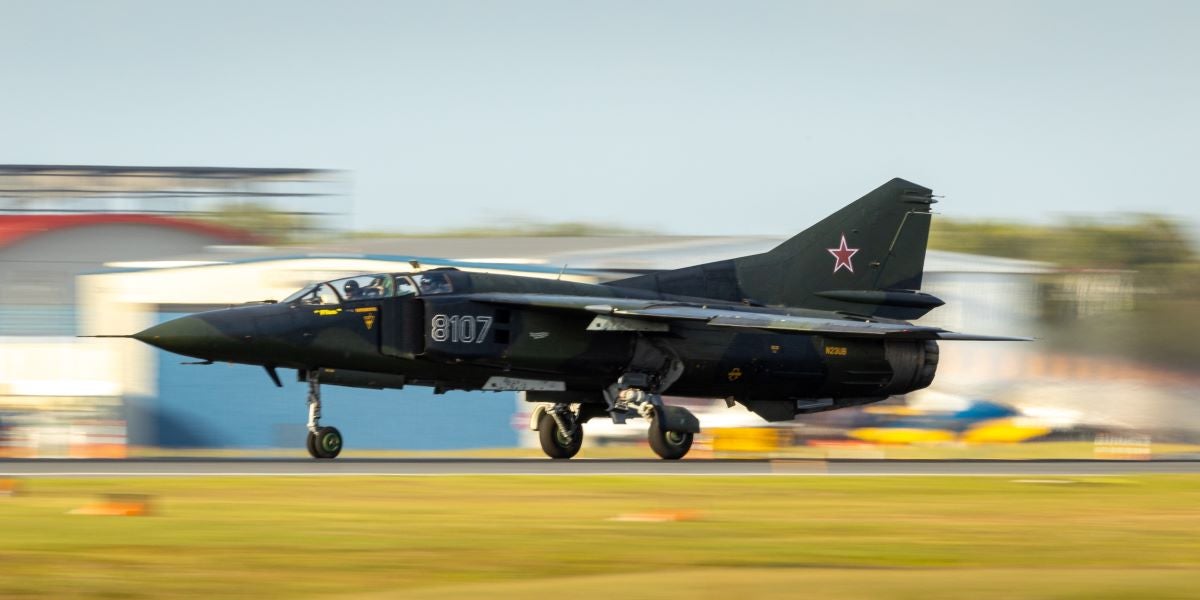The National Transportation Safety Board (NTSB) has released the preliminary report on the investigation into the crash of a privately owned MiG-23UM at the Thunder Over Michigan airshow earlier this month.
As previously reported by FLYING, on August 13 both pilots ejected from MiG at low altitude during an airshow performance. The pilots sustained minor injuries in the event and were rescued from Belleville Lake. The jet came down near the Waverly on the Lake Apartments in Belleville, damaging a few cars.
The aircraft, known as a “Flogger,” was owned and flown by Dan Flier, a former U.S. Naval aviator. The aircraft had been one of the highlights at the EAA’s AirVenture in Oshkosh, Wisconsin, a few weeks earlier.
The flight was the second-to-last act performing at the airshow staged at the Willow Run Airport (KYIP) in Ypsilanti, Michigan.
The MiG is a Russian design that uses variable-geometry wings that allow their sweep angle to be changed in flight. The jet is powered by a single turbojet engine with afterburner capability.
According to the NTSB preliminary report, the pilot reported that the flight departed from Runway 23 at KYIP, followed by a right turn to a low-level knife edge pass along Runway 23.
“Following the pass, he started banking the airplane and noticed that the engine afterburner did not ignite, and the airspeed began to decrease,” the report states. “He brought the swing wings into the fully forward position (16-degree sweep) to increase lift and began troubleshooting the problem.”
The report continues that as the pilot was actively troubleshooting the problem, the rear seat observer stated that they needed to eject. The pilot reported that he was not ready to eject and was still troubleshooting while maneuvering the airplane toward Runway 27 at Willow Run when his ejection seat fired. According to the pilot, if either occupant pulls the ejection handle, both seats eject.
The rear seat observer told the NTSB that the airplane made a pass along the runway, and the plan was to go to the left for another pass followed by a landing. However, the engine was not “accelerating.”
“He and the pilot had a brief discussion and began to climb up and gain altitude,” the report states. “They determined that they had some type of engine problem and needed to get back on the ground. He stated that they determined they did not have sufficient altitude to make it to a runway at the airport. He said they were compressed for time and needed to get out.”
When asked if he had pulled the ejection seat handles, the back seat observer stated that he could not specifically remember but thinks that he would have pulled them.
The ejection was captured on video, showing the airplane in a left bank when the ejection seats fire. The airplane continued to the left and descended into the ground, coming down about 1 mile south of the approach end of Runway 27 at KYIP. There was a postimpact explosion and fire that produced a large column of black smoke.
The fuselage and empennage containing the tail surfaces and engine came down in the parking lot next to the apartment building. The rest of the aircraft was fragmented and distributed along the ground.
It will be several months before the NTSB will conclude its investigation and issue a final report on the cause of the accident.
